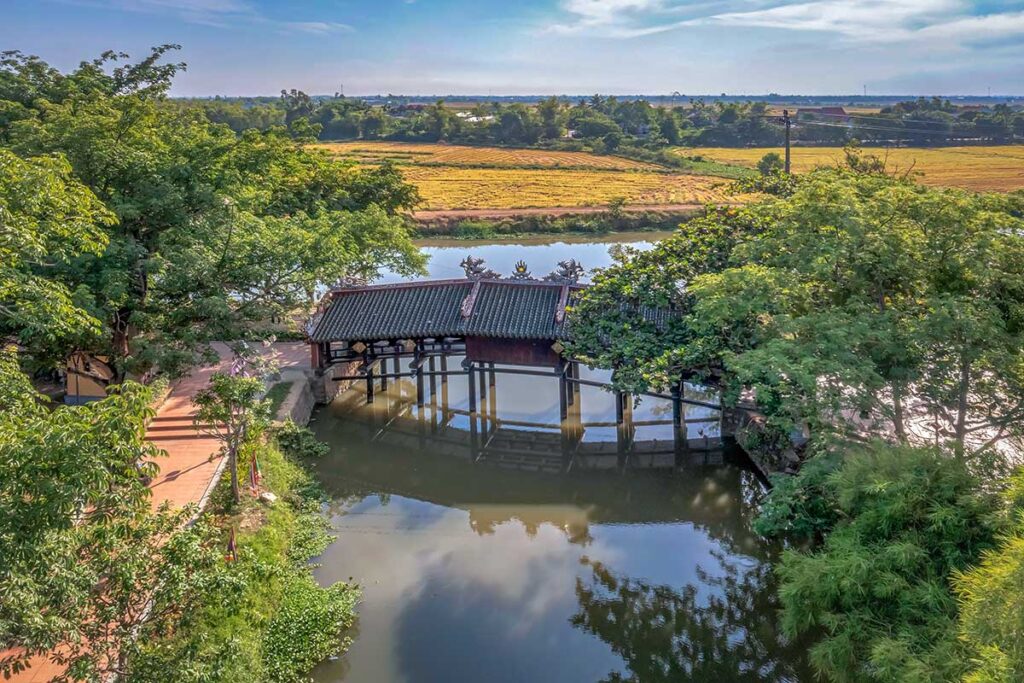What is Thanh Toan Bridge?
Thanh Toan Bridge is a rare example of an 18th-century tile-roofed wooden footbridge, located in Thanh Thuy Chanh Village, about 8 kilometers from Hue. Spanning a small canal, the bridge was built not only to help villagers cross the water but also to serve as a communal space for resting and worship.

Its design reflects both practical function and spiritual purpose — a place where locals gather, shelter from the sun, and pay respects at a small shrine built into the center of the bridge. Today, it stands as a symbol of rural Vietnamese heritage and community life.
History of Thanh Toan Bridge
Origins and Purpose
Thanh Toan Bridge was originally built in 1776 by Tran Thi Dao, a woman from the nearby village and the wife of a high-ranking mandarin under the Le Dynasty. With no children of her own, she chose to dedicate her wealth to something that would benefit the local community. The bridge was a generous gift to her village — not just a means to cross the canal, but also a shaded place for rest and social interaction in daily rural life.
Its design — a covered bridge with seating areas — was especially suited to the needs of local farmers and travelers, providing shelter from both rain and sun. Over time, the bridge became not just a practical structure, but a spiritual and cultural symbol of the village itself.
Recognition and restoration
Tran Thi Dao’s act of generosity was officially recognized by the royal court. Emperor Le Hien Tong issued a decree to honor her contributions and exempted the village from several types of taxation. Later, in 1925, Emperor Khai Dinh ordered an altar to be placed on the bridge so that she could be worshipped and remembered.
The bridge has undergone several restorations over the centuries to protect its wooden structure from flood damage and the passage of time — notably in 1844, 1904, 1956, 1991, and again in 2020. Despite these efforts, it has always retained its original design and charm. In 1990, Thanh Toan Bridge was officially recognized as a national cultural relic, securing its status as one of the most important historical landmarks in rural Hue.
Architecture & design
Unique covered bridge structure
Thanh Toan Bridge is a rare example of traditional Vietnamese architecture known as “house above, bridge below” (thượng gia hạ kiều). This style combines the practical function of a bridge with the aesthetics and comfort of a small communal structure. The original bridge measured 18.75 meters in length and 5.82 meters in width, spanning a canal that runs through the heart of the village.
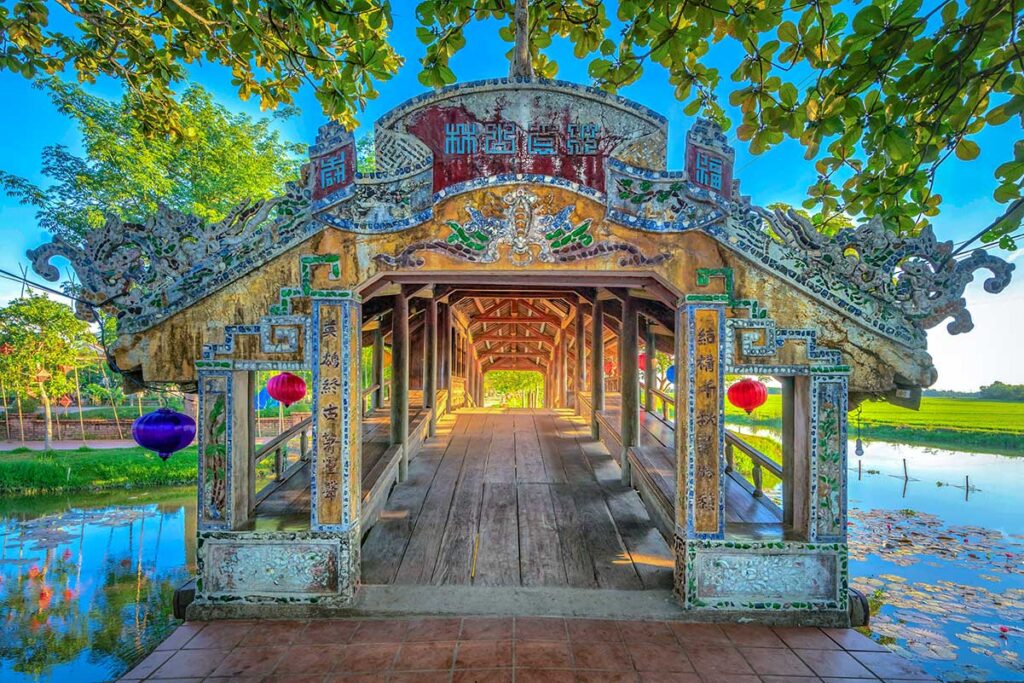
The entire structure is supported by robust ironwood pillars and beams, chosen for their durability and resistance to weather. Its slightly arched shape allows small boats to pass underneath, while its elevated roof provides shade and protection — a vital feature in Hue’s often harsh climate.
Decorative details
The bridge’s roof is covered with traditional yin-yang tiles, giving it a curved silhouette that resembles temple roofs. Along its edges, you’ll notice intricate dragon and phoenix carvings, symbolizing power, harmony, and nobility — reflecting the respect villagers held for Tran Thi Dao and her act of generosity.
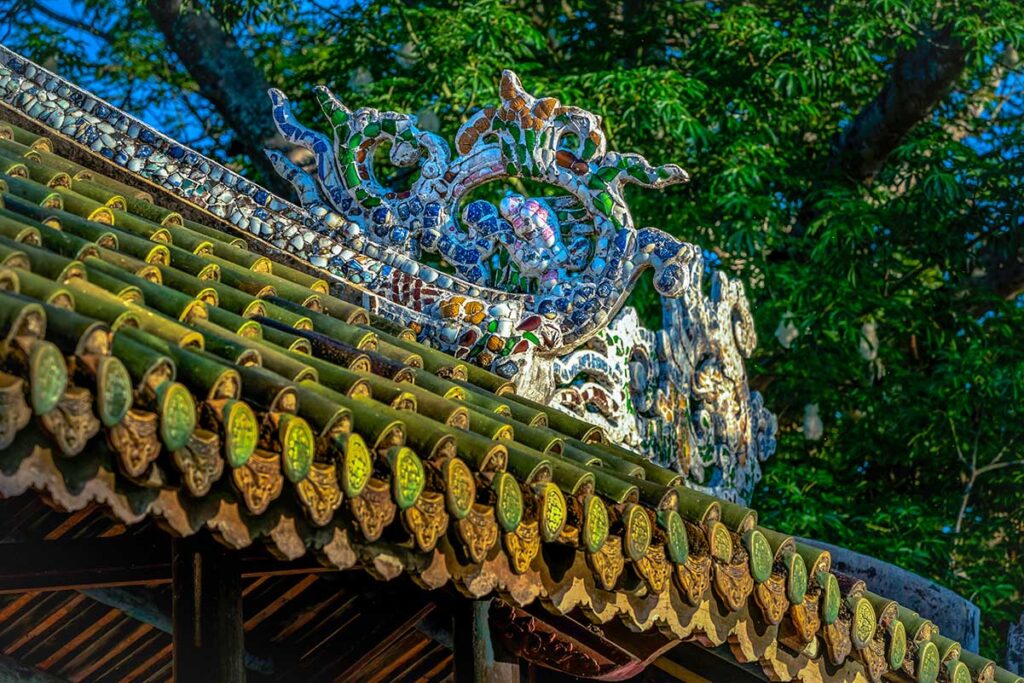
Inside the bridge are wooden benches on both sides, allowing people to sit, rest, or take shelter from sun and rain. Additional ornamentation includes inlaid ceramics and finely carved motifs, adding colorful and symbolic details to this otherwise simple rural structure. Despite its modest size, Thanh Toan Bridge is an excellent example of how Vietnamese architecture blends function, art, and local cultural identity.
Things to do at and around Thanh Toan Bridge
1. Walk the Bridge and Explore the Village
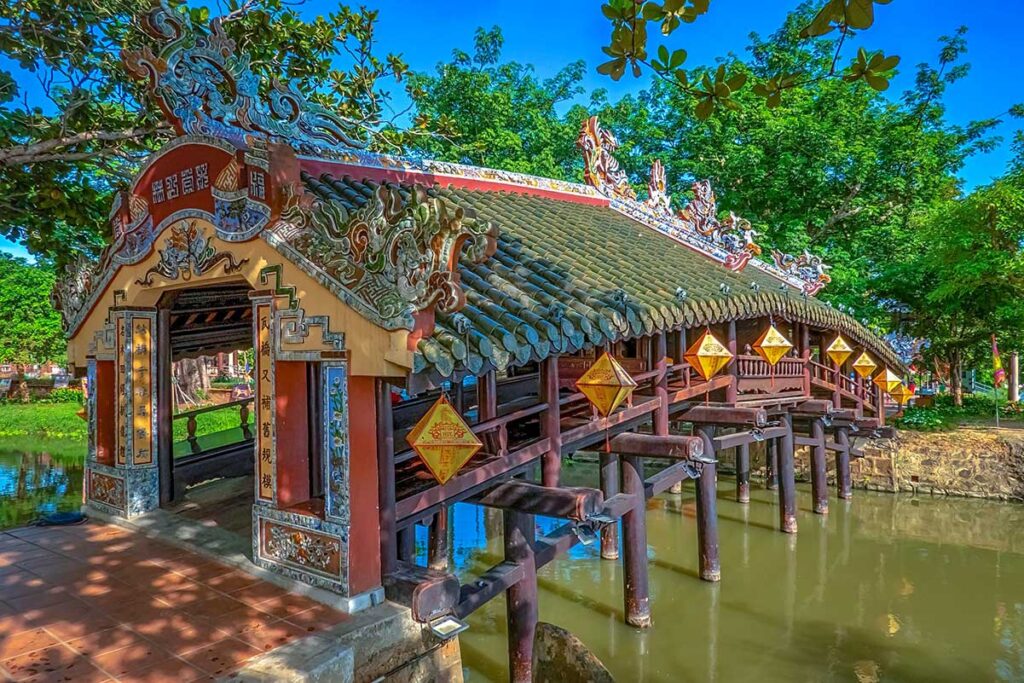
Take time to enjoy the bridge itself — from the tiled roof to the benches inside, it’s designed for slow appreciation. The setting is peaceful, surrounded by rice fields, narrow canals, and village homes.
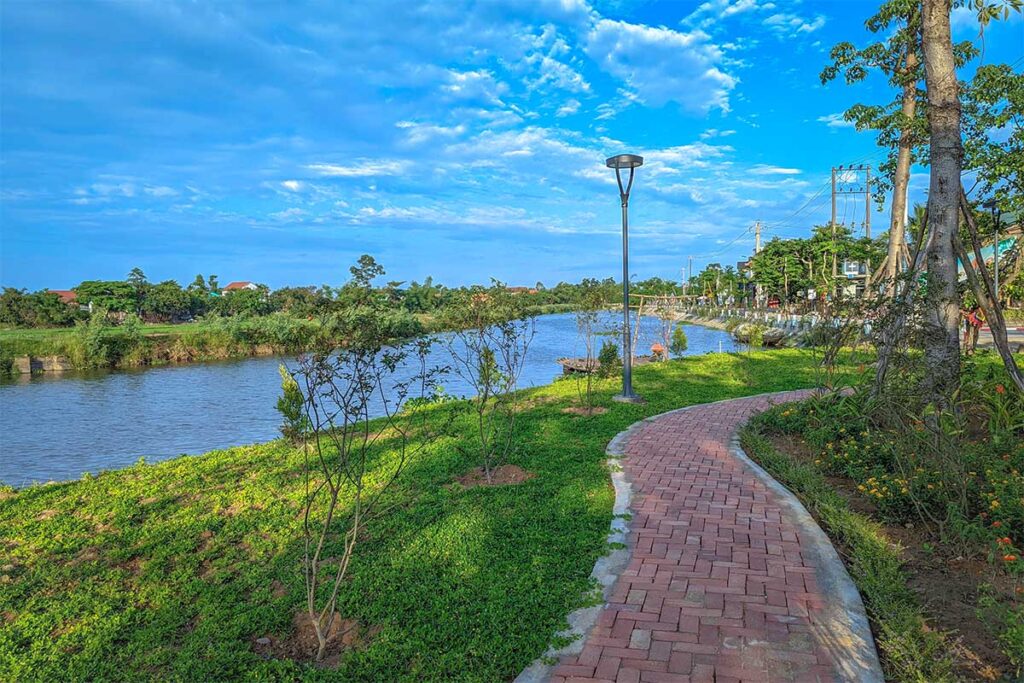
You can walk or cycle through Thanh Thuy Chanh village to spot family temples, communal houses, and traditional architecture that still shapes daily life here.
2. Visit the Agricultural Museum

Next to the bridge is a small rural museum that showcases traditional farming, fishing, and daily village life in Vietnam. Inside, you’ll find exhibits of tools, household items, and rice-processing equipment. While reviews are a few years old, past visitors enjoyed live demonstrations by local women — including rice pounding and traditional farming techniques. It’s an insightful way to understand the hard manual work behind Vietnamese agriculture, especially if a guide or host is available to explain.
3. Thanh Toan Local Market
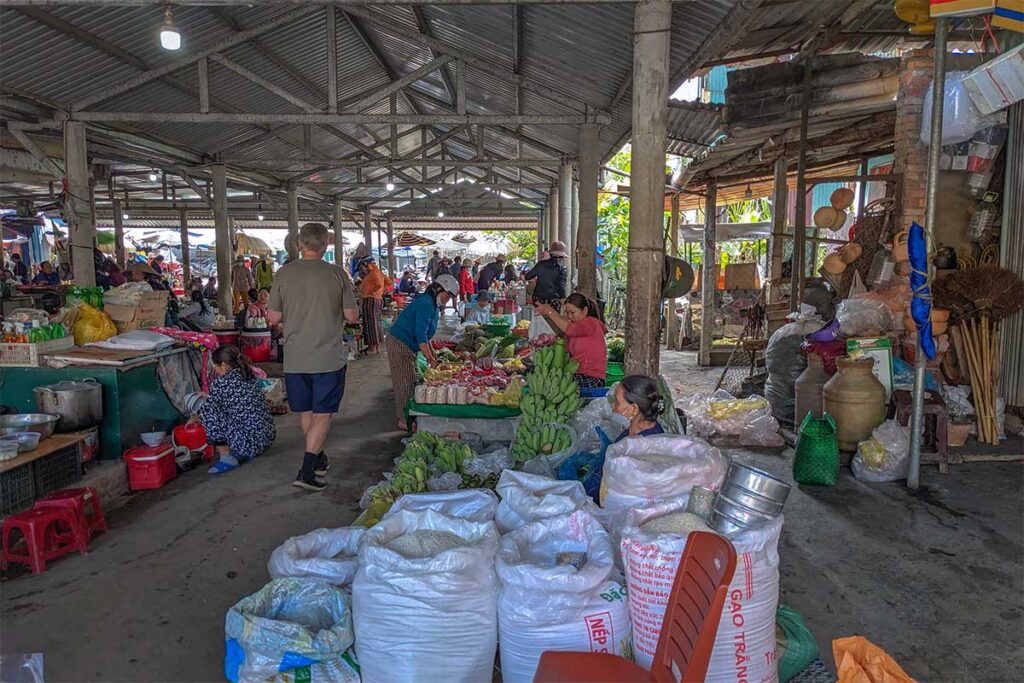
Right across the bridge is the Thanh Toan Market — a lively, no-frills local market. It’s not designed for tourists, which is exactly what makes it special. If you visit in the early morning, you’ll find villagers buying vegetables, fresh herbs, live fish, and chatting over breakfast. There’s not much to “see,” but it’s a chance to observe and experience daily rural life in Vietnam.
4. Relax by the River
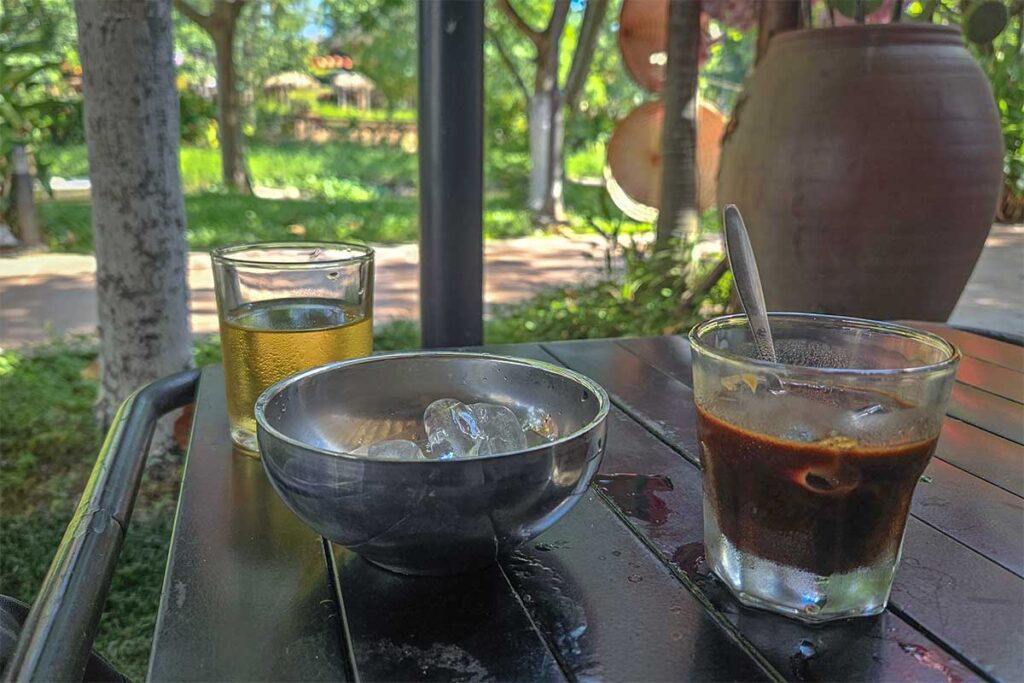
Several small local cafés are located along the canal near the bridge. They’re simple but perfectly placed for a break after a walk or cycle ride, offering cold drinks and peaceful views of the river and tiled bridge. If you’re exploring by bicycle, this makes an ideal rest stop.
5. Thanh Toan Night Market (Weekends Only)
From Friday to Sunday evenings, the Thanh Toan Night Market offers a lively atmosphere with local foods, folk games, and cultural performances. It’s a great time to try rustic Hue specialties, listen to music, and enjoy the friendly village vibe. The setting, right by the bridge and river, makes it especially charming.
Local festivals and events
Death Anniversary of Tran Thi Dao
Every year on the 15th day of the 8th lunar month, the village holds a memorial celebration to honor Tran Thi Dao, the woman who funded the construction of Thanh Toan Bridge. The event includes a ceremonial procession from the communal house to the bridge, traditional offerings, and a series of folk games like rice pounding and tug of war. It’s a heartfelt tribute to her legacy and one of the most meaningful events for the local community.
Bai Choi and the Countryside Market Fair
During the Hue Festival (held every two years), Thanh Toan Bridge becomes the center of a vibrant countryside fair. The area comes alive with Bai Choi (a traditional singing and card game), cooking demonstrations, folk music, and craft workshops. You can try making conical hats, sample rustic Hue dishes, or watch cultural performances that showcase the daily life and values of rural Vietnam. It’s one of the most authentic and interactive cultural experiences in the region.
How to get to Thanh Toan Bridge
Thanh Toan Bridge is located about 8 kilometers southeast of Hue’s city center, in Thuy Thanh Commune. Getting there is easy and adds a refreshing contrast to the city’s imperial landmarks — especially if you enjoy seeing the countryside.
Taxi or Grab
The fastest and most convenient way is by taxi or a ride-hailing app like Grab. From the center of Hue, the ride takes about 15–20 minutes and usually costs around 70,000 to 100,000 VND (about $3–4 USD). It’s a good option if you prefer door-to-door comfort without having to navigate.
Cycling or Scooter
Cycling to Thanh Toan Bridge is a popular choice, especially if you enjoy slow travel and scenic views. The route takes you past rice paddies, small farms, and quiet village roads. You can rent a bicycle in Hue or join a guided cycling tour that often includes stops at local markets and farming villages along the way.
If you’re more confident on two wheels, riding a scooter gives you more flexibility. The road conditions are generally good, and the distance is short enough for even casual riders. Just make sure you have a valid license and know how to navigate Vietnamese traffic.
Is it worth visiting?
Thanh Toan Bridge isn’t as grand or historically significant as the Imperial City or Hue’s famous royal tombs — and it’s slightly off the typical tourist trail. But that’s exactly what makes it worth considering. If you’re looking for a peaceful break from the busier city sights, this rural spot offers a completely different side of Hue.
It’s especially enjoyable if you combine it with a cycling trip through the countryside. The bridge itself is modest but charming, and the surrounding village gives you a glimpse of authentic local life. It’s not something to prioritize over major sites like Tu Duc or Minh Mang Tomb, but if you have time and want to see something more local and laid-back, it’s a lovely addition to your itinerary.
Practical tips for visiting
- Best time to go: Early morning or late afternoon offers soft light for photography and cooler temperatures — especially great if you’re cycling.
- No entrance fee: Visiting the bridge is completely free.
- Weekend visits: Weekends tend to have more activity, including local markets and possible night market stalls, but can be slightly busier.
Nearby sights to combine:
- Thanh Toan Local Market – Right next to the bridge, this market is about as local as it gets. Come early in the morning to see it at its most active and snap some authentic rural life photos.
- Lac Duong Sunflower Garden (1.5 km away) – A seasonal flower field with swings, bamboo bridges, and photo spots — perfect for a quick detour.
- Nhu Y River – Walk along the riverbanks or take a short boat ride during festivals or arranged visits.
- Village Communal Houses and Family Temples – Quiet, traditional places that reflect Hue’s cultural and ancestral heritage.
